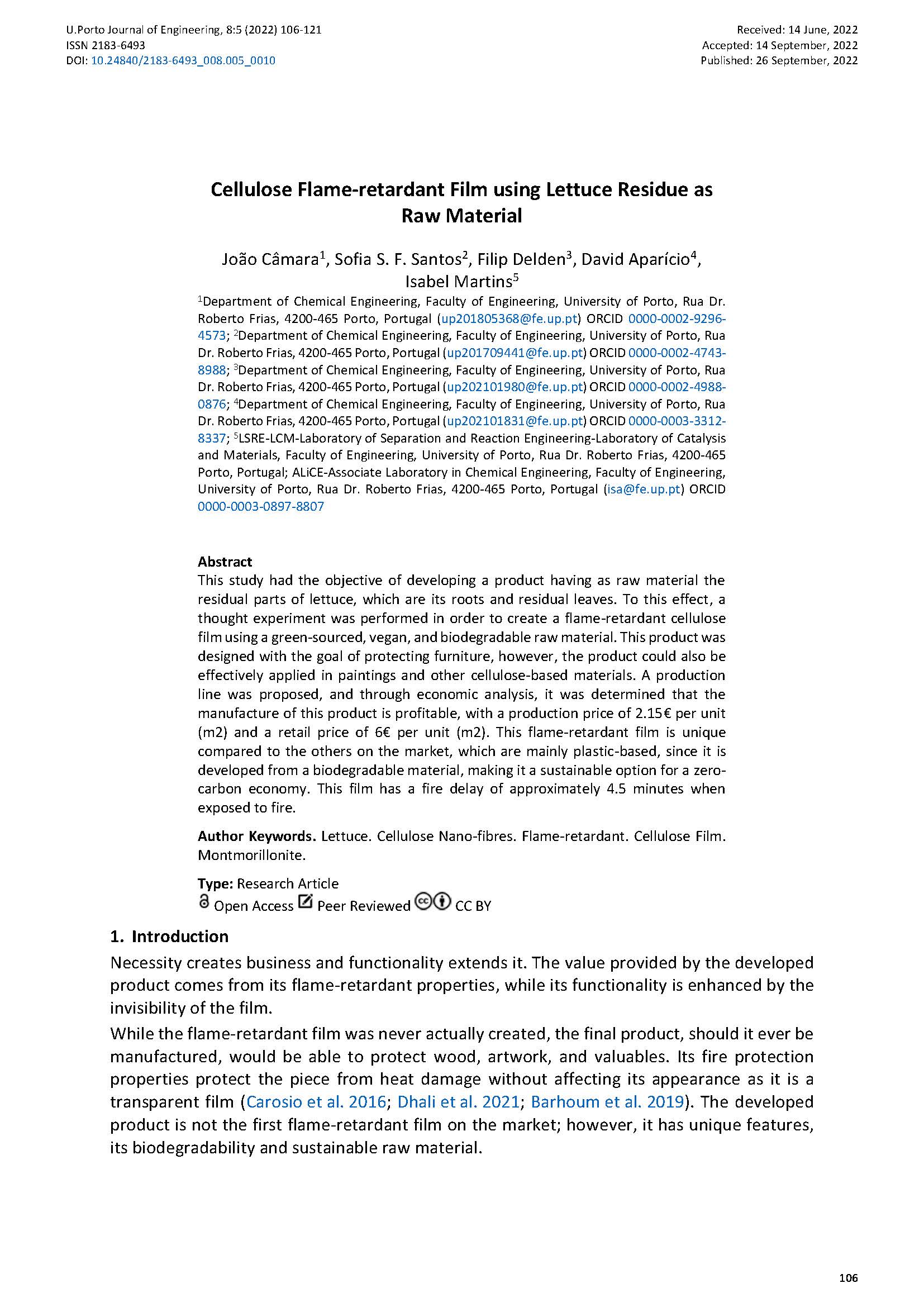Cellulose Flame-retardant Film using Lettuce Residue as Raw Material
Main Article Content
Abstract
This study had the objective of developing a product having as raw material the residual parts of lettuce, which are its roots and residual leaves. To this effect, a thought experiment was performed in order to create a flame-retardant cellulose film using a green-sourced, vegan, and biodegradable raw material. This product was designed with the goal of protecting furniture, however, the product could also be effectively applied in paintings and other cellulose-based materials. A production line was proposed, and through economic analysis, it was determined that the manufacture of this product is profitable, with a production price of 2.15€ per unit (m2) and a retail price of 6€ per unit (m2). This flame-retardant film is unique compared to the others on the market, which are mainly plastic-based, since it is developed from a biodegradable material, making it a sustainable option for a zero-carbon economy. This film has a fire delay of approximately 4.5 minutes when exposed to fire.
Downloads
Article Details

This work is licensed under a Creative Commons Attribution 4.0 International License.
Authors who publish with this journal agree to the following terms:
- Authors retain copyright and grant the journal right of first publication with the work simultaneously licensed under a Creative Commons Attribution License that allows others to share the work with an acknowledgement of the work's authorship and initial publication in this journal.
- Authors grant the journal the rights to provide the article in all forms and media so the article can be used on the latest technology even after publication and ensure its long-term preservation.
- Authors are able to enter into separate, additional contractual arrangements for the non-exclusive distribution of the journal's published version of the work (e.g., post it to an institutional repository or publish it in a book), with an acknowledgement of its initial publication in this journal.
- Authors are permitted and encouraged to post their work online (e.g., in institutional repositories or on their website) prior to and during the submission process, as it can lead to productive exchanges, as well as earlier and greater citation of published work (See The Effect of Open Access).

